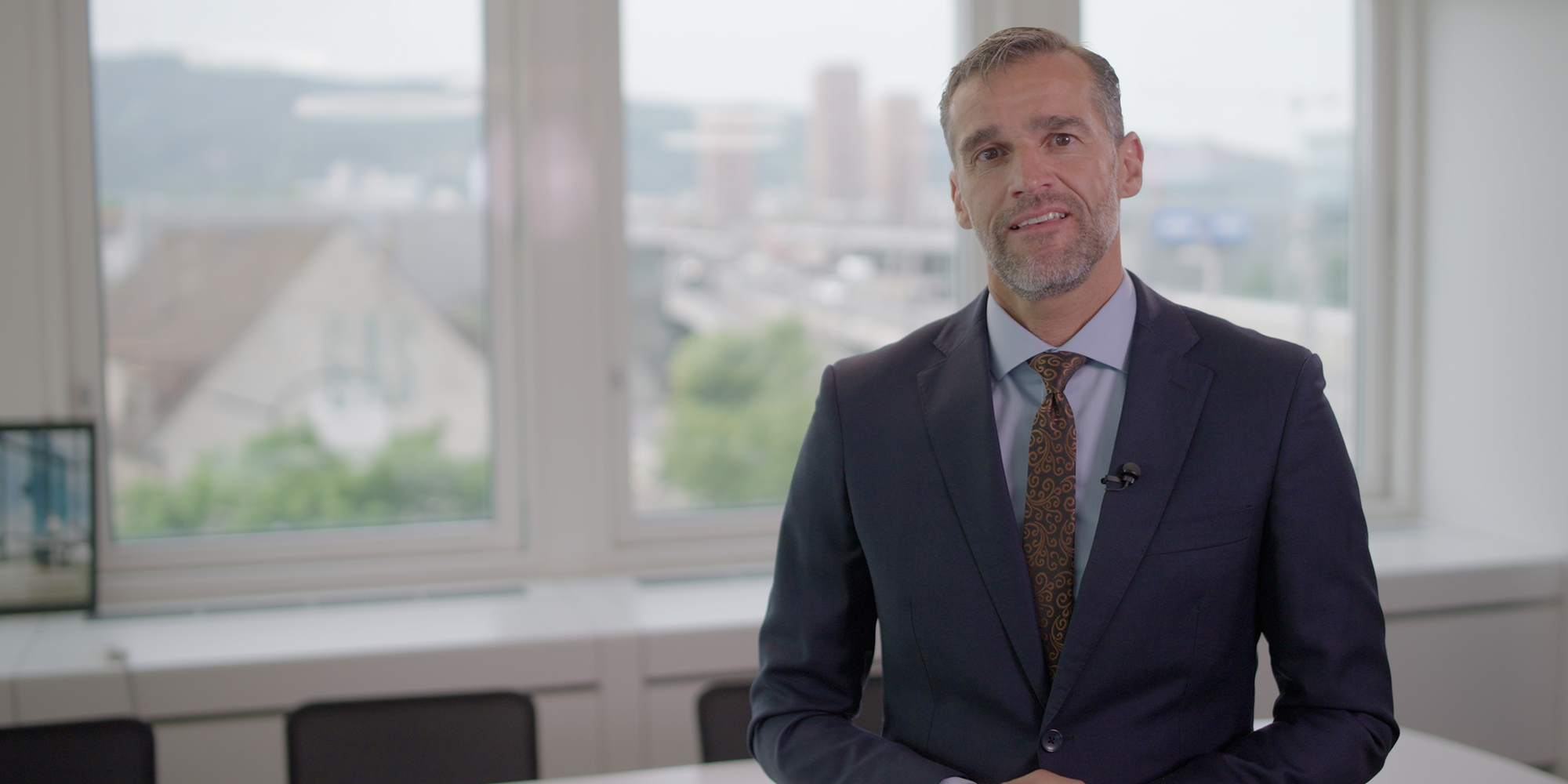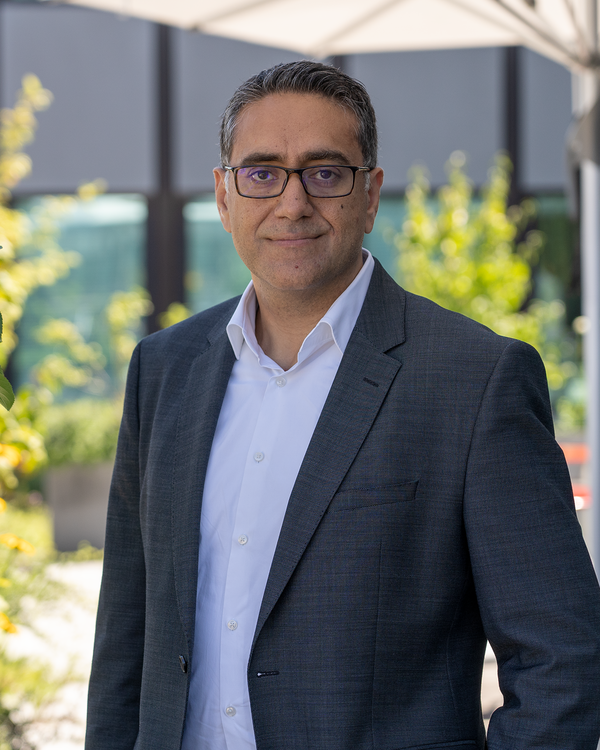"We need to move away from rigid regulatory limits"
Pension funds and institutional investors are facing significantly tougher challenges. These are having a short-term effect. But there are also long-term consequences on asset allocation, for example. Iwan Deplazes is therefore calling for concrete answers from institutions and longer-term decisions by the regulator.
Interview: Andreas Schaffner, Magazin Sphere

Iwan Deplazes, the current market environment is disappointing for a private investor, to put it mildly. What’s your view as a professional investor?
Iwan Deplazes: It's certainly become more demanding for us as well. No one can be happy about a 12 percent decline in a broadly diversified mixed portfolio. We all know that there’s a war going on and supply chains are weighing on markets, not to mention inflation. We also have just emerged from a world where interest rates have only been going downhill for almost 15 years. Of course, many investors have been spoiled. We were even talking about a new normal.
Now the new normal looks different: isn't it more the case that we’re returning to the old normal where interest rates are positive?
(laughs) Yes, but what’s normal? 4 percent inflation – you’d have to go quite far back in Swiss economic history to encounter that again.
Inflation and an interest rate shock: what are you doing to address this issue?
Initially, it has meant losses on practically all asset classes. But, as can be seen in the US in particular, rising interest rates are also creating new opportunities – US government bonds are again trading at a yield of almost 4 percent. As painful as this correction is, a higher interest rate environment means that assets are recovering value while interest-free savings in an inflationary environment are a destruction of value.
What are institutional investors such as pension funds currently doing? Waiting around and having a tea?
Not at all. They’re also feeling the fall in bond and share prices of course, and this often also leads to reallocations. At the same time, however, bonds are opening up new investment possibilities which pension funds have been lacking for years. Institutional investors would do well to keep a close eye on the markets and stay vigilant so they don't miss the right entry point.
Pension funds must also always keep an eye on their liabilities.
Absolutely. In the second quarter of 2022, private-law pension funds saw a sharp decline in their reserves. According to our Pension Funds Monitor, these fell by an average of 9.3 percentage points to 7.8 percent. One problem is therefore decreasing value fluctuation reserves, and this affects funds’ risk capacity. As at the end of June 2022, value fluctuation reserves were again significantly below the average target value of 18 percent. So they've moved significantly away from the record highs of over 20% at the end of 2021.
Swisscanto Pension Funds Study: basis for decisions
The annual Swisscanto Pension Funds Study is a reliable source of information for all pension funds. For more than 20 years, it has provided valuable insights into the second pillar, analysing the returns of Swiss pension funds and comprehensively presenting their current condition.
What does this mean for the investment policy?
Nothing in the short term. Reserves are there to absorb these market developments. But what we’re seeing is that risk capacity is decreasing and asset allocations have fallen into distress in many places due to the high losses on equities and bonds. For example, as equities and bonds have both lost significant value at the same time, their relative values have decreased compared with other asset classes such as real estate and private market investments. This is why we are now seeing various pension funds being forced to reduce their more illiquid positions such as real estate. The impact of this can already be seen on the stock markets, with listed real estate vehicles, supposedly the most liquid variant of real estate investments, suffering major price losses.
Following the electorate's vote on reforms to the OASI social security system, making it possible to increase women’s retirement age, legislative changes to the Second Pillar are now pending. These will take demographic developments into account and lower the conversion rate and therefore promised returns.
Yes, this is a development which we are very supportive of, although many pension funds have already taken their own specific action in these areas. At the same time, we’re also calling for funds worth over 1,000 billion Swiss francs to be managed more professionally. It’s necessary to break free from rigid regulatory limits on asset allocation, which create a false sense of security. This step, combined with the introduction of the Prudent Investor Rule, has already been successfully implemented by countries like Canada and the Netherlands, driving professionalisation in dealing with large assets.
But they’re also attacking Switzerland’s “militia system” [the principle where every qualified citizen should take on public offices or duties on a part-time or voluntary basis] itself, with matched representation on foundation boards being replaced by investment committees that are more professionalised.
Well, I’m from Uri and firmly believe in the militia system. But there are limits to managing such large assets. The focus must be on investment expertise and the ability to deal with risks and potential returns.
Let’s look at the asset management industry as a whole. What’s changed here?
First let me give you a number. Overall, the Swiss fund industry had to stomach 185 billion Swiss francs in outflows in the first half of the year. This is shown by the latest figures from Swiss Fund Data. This isn't chicken feed! It’s putting pressure on the entire industry of course. On the other hand, it’s pleasing to hear that a European study by Refinitiv has shown how Swiss asset managers can also hold their own against European competition. Since the beginning of the year, for example, we’ve ranked third among the highest-selling fund providers in Europe with a new cash inflow of 7.3 billion euros. Only Blackrock and Vanguard – the world’s largest providers – posted even higher cash inflows during this difficult year.
Hasn't Switzerland’s positioning as a fund location suffered?
No. Despite the high losses in assets, Switzerland was able to maintain its strong competitive position as a fund location in Europe. This also applies to sustainability issues. The way in which we have positioned ourselves on the topic of sustainability is not dependent on short-term capital market trends, but on the conviction that this is an important topic for us and will continue to occupy us and society as a whole for a very long time to come.
As we see from the European taxonomy, the concept of sustainability itself is also changing.
Yes. Very much so. Seven months ago, it would probably have been clear to most market participants that companies from the defence industry or nuclear power producers do not belong in a sustainable portfolio. Sensitivities towards these companies have changed quite a bit following the outbreak of the war between Ukraine and Russia, and the energy shortages that are likely to occur. In this fast-paced world, it’s now important we carry out our basic analyses, communicate the results in all forms in a transparent and justified manner and then consistently implement them.
Do you subordinate your ESG strategies to these new EU taxonomies?
Yes. Like most major Swiss asset managers, we also have an expanded product range under Luxembourg law. That’s why we are obliged to ensure compatibility with European taxonomy.
How is ESG integrated?
Find out here how Zürcher Kantonalbank’s Asset Management integrates ESG criteria into investment decisions.
The digital transformation of the asset management industry is in full swing. What role do you, as a person taking a leading role, also play on the AMAS side?
As an industry, we’ve always used new technologies both to produce more efficiently and also to deliver additional benefits to our customers. The entire industry has been investing in technological progress for decades. It focuses on the three areas: the “point of investment decision”, the “point of execution” and the “point of sales”.
Nowadays, a lot of focus is placed on how blockchain technology can also be used in asset management.
That’s right. Blockchain technology could be particularly helpful to us in the process of implementing investment decisions. Thanks to the technology, we expect our trade orders to be executed more quickly in the future, for example. But of course, there’ll be many other applications for this technology which will simplify the work of the asset management industry and provide additional benefits for customers, for example in reporting.
What about clients’ needs? Few private investors call a wallet their own and hold crypto values or NFTs in it.
Clients’ needs are very different. But all customers in theory want to achieve the most attractive risk/return ratio for their investments, and of course at fair prices. But the technologies used by the producer of these such solutions are of secondary importance to most clients. When it comes to wallets for cryptocurrencies, the focus is on flexibility and security. Producers of these solutions also use state-of-the-art technologies here.
This interview was conducted by Editor-in-Chief Andreas Schaffner last September. It was published in the SPHERE magazine at the start of November 2022.


